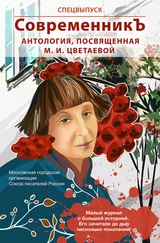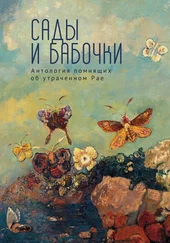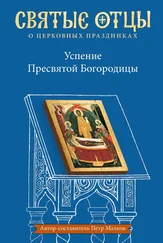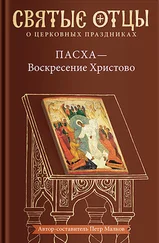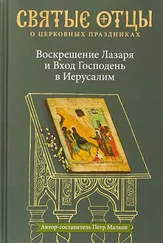Kotthoff, Helga (1992b): Unruhe im Tabellenbild? Zur Interpretation weiblichen Sprechens in der Soziolinguistik. In: Susanne Giinthner, Helga Kotthoff (eds.). Die Geschlechter im Gespräch. Kommunikation in Institutionen. – Stuttgart: Metzler.
Kotthoff, Helga (1993): Unterbrechungen, Uberlappungen und andere Interventionen. In: Deutsche Sprache 2. – S. 162–185.
Kotthoff, Helga (1994a): Kommunikative Stile von Madchen und Jungen und Geschlechterhierarchien in der Schule. In: Ulla Bracht et al. (Hrsg.). Jahrbuch der Padagogik. – Frankfurt; Bern; New York: Fang.
Kotthoff, Helga (1994b): Nachwort Geschlecht als Interaktionsritual? In: Erving Goffman, Interaktion und Geschlecht (hrsg. von Hubert Knoblauch). – Frankfurt: Campus.
Kotthoff, Helga (1995a): Von Klassenclowns und lachelnden Prinzessinnen. Geschlechtertypisierung und Humorverhalten in der kindhchen Kommunika-tionsentwicklung. In: Klaus Wagner (ed.). Sprechhandlungserwerb. – Essen: Die blaue Eule.
Kotthoff, Helga; Wodak, Ruth (eds.) (1997): Communicating Gender in Context. – Amsterdam: Benjamins.
Kotthoff, Helga (2000): Gender and Joking. On the Complexities of Women’s Image Pohtics in Humorous Narratives. In: Journal of Pragmatics 32. – P. 55–80.
Kotthoff, Helga (2002): Was heiRt eigentlich «doing gender?» In: Wiener linguistischer Almanach. – Sonderband 55.
Kotthoff, Helga (2003): Preface to the special edition on gender and humor. In: Journal of Pragmatics, (to appear).
Kramarae, Cheris (1981): Women and men speaking. – Rowley; MA: Newbury House.
Kyratzis, Amy (2002): Constituting the emotions: A longitudinal study of emotion talk in a preschool friendship group of boys. In: Bettina Baron, Helga Kotthoff (eds.). Gender in interaction. Perspectives on femininity and masculinity in ethnography and discourse. – Amsterdam: Benjamins. – P. 51–75.
Labov, William (1966): The social stratification of English in New York City. – Washington D. C.: Center for Allied Linguistics.
Labov, William (1972a): Sociolinguistic Patterns. – Philadelphia: University of Pennsylvania Press.
Labov, William (1972b): Rules for Ritual Insults. In: Language in the inner city. – Philadelphia, University of Pennsylvania Press. – P. 297–353.
Lampert, Martin D.; Ervin-Tripp, Susan (1998): Exploring paradigm: The study of gender and sense of humor near the end of the 20th century. In: Willibald Ruch (ed.). The Sense of Humor. Explorations of a Personality Characteristic. – Berlin; New York: de Gruyter. – P. 231–271.
Lampert, Martin D.; Ervin-Tripp, Susan (2003): Risky Laughter: Teasing and Self-Directed Joking among Male and Female Friends. In: Journal of Pragmatics (to appear).
Lakoff, Robin (1973): Language and Women’s Place. In: Language in Society 2. – P. 45–79.
Leet-Pellegrini, Helena (1980): Conversational Dominance as a Function of Gender and Expertise. In: Howard Giles, Peter Robinson, Phillip M. Smith (eds.). Language. Social Psychological Perspectives. – Oxford: Oxford University Press. – P. 97—104.
Leodolter, Ruth (1975): Das Sprachverhalten von Angeklagten bei Gericht. – Kronberg: Scriptor.
Lever, Janet R. (1978): Sex differences in the complexity of children’s play and games. In: American Sociological Review, 43. – P. 471–483.
Local, John (1982): Modelling Intonational Variability in Children’s Speech. In: Suzanne Romaine (ed.). Sociolinguistic Variation in Speech. – London: E. Arnold.-P. 73–81.
Macaulay, Ron K. S. (1978): Variation und consistency in Glaswegian English. In: Peter Trudgill (ed.). Sociolinguistic Patterns in British English. – London: E. Arnold.
Maltz, Daniel; Borker, Ruth (1982). A Cultural Approach to Male-Female Mis-communication. In: John Gumperz (ed.). Language and Social Identity. – Cambridge: Cambridge University Press. – P. 196–216. Dt. (1991): MiB-verstandnisse zwischen Frauen und Mannem – kulturell betrachtet. In: Susanne Giinthner, Helga Kotthoff (Hrsg.). Von fremden Stimmen. Weib-liches und mannliches Sprechen im Kulturvergleich. – Frankfurt. Suhrkamp.
Martin, Hans-Peter; Schumann, Harald (1996): Die Globalisierungsfalle. – Reinbek: Rowohlt.
Mattheier, Klaus (1980): Pragmatikund Soziologie der Dialekte. – Heidelberg: Quelle&Meyer.
McConell-Ginet, Sally (1978): Intonation in a Man’s World. In: Sign 3,2. – P. 541–559.
McElhinny, Bonnie S. (1992): «I don’t smile any more»: Affect, Gender and the Discourse of Pittsburgh Police Officers. In: Kira Hall et al. (eds.). Locating Power. – Berleley: BWLG. – P. 386–403.
McGhee, Paul E. (1979): The Role of Laughter and Humor in Growing up Female. In: Claire Kopp (ed.). Becoming Female. – New York: Plenum Press. – P. 199–209.
McGhee, Paul E. (1980): Humor. Its origin and development. – San Francisco: Freeman and Company.
Menz, Florian; Lalouschek, Johanna; Stollberger, Claudia; Vodopiutz, Julia (2002): Geschlechtsspezifische Unterschiede bei der Beschreibung von Brustschmerzen: Ergebnisse einer medizinisch-linguistischen transdiszi-plinaren Studie.
Miemitz, Barbel (1997): «Male Person» vs. «Everything that is not a male person». Gender and sex in Polish. In: Helga Kotthoff, Ruth Wodak (eds.), Communicating Gender in Context. – Amsterdam: Benjamins. – P. 3—31.
Miller, Casey; Swift, Kate (1972): One Small Step for Genkind. In: New York Times Magazine, April 16.
Milroy, James; Milroy, Lesley (1978): Belfast: change and variation in an urban vernacular. In: Peter Trudgill (ed.). Sociolinguistic Patterns in British English. – London: Edward Arnold.
Milroy, James; Milroy, Lesley (1985): Linguistic change, social network and speaker innovation. In: Journal of Linguistics 21. – P. 339–384.
Milroy, Lesley (1980): Language and Social Networks. – Baltimore: University Park Press.
Milroy, Lesley (1982): Social network and linguistic focusing. In: Suzanne Romaine (ed.). Sociolinguistic Variation in Speech Communities. – London: Edward Arnold.
Modaressi, Yahia (1987): A Sociolinguistic Analysis of Modem Persian. Unpubl. Ph.D. dissertation. – University of Kansas.
Moosmiiller, Sylvia (1984): Soziale und psychosoziale Sprachvariation. Dissertation. – Wien.
Moosmiiller, Sylvia (2002): Die Stimme – Ausdruck geschlechtlicher Individualist oder sozialer Aneignung. In: Wilhelm Richard Baier, Franz Manfred Wuketits (Hrsg.). Mann und Frau. Der Mensch als geschlechtliches Wesen. – Graz: Leykam. – S. 118–133.
Miihlen-Achs, Gitta (1993): Wie Katz und Hund. Die Korpersprache der Geschlechter. – Miinchen: Frauenoffensive.
Mulkay, Michael (1988): On Humour. – Cambridge: Polity Press.
Nichols, Patricia (1983): Linguistic options and choices for Black women in the rural south. In: Barrie Thome, Cheris Kramerae, Nancy Henley (eds.). Language, Gender, and Society. – Rowley, Mass.: Newbury House.
Nilsen, Alleen Pace (1971): Women in Children’s Literature. College English, May.
Nilsen, Alleen Pace (1973): Grammatical gender and ist relationship to the equal treatment of males and females in children’s books. Unpublished Ph.D. thesis. – University of Iowa.
Ochs, Elinor (1991): Indexing gender. In: Alessandro Duranti and Charles Goodwin (eds.). Rethinking Context. – Cambridge: Cambridge University Press.
Ochs, Elinor, Taylor, Carolyn (1992): Familiy narrative as political activity. Discourse & Society 3,3. – P. 301–340.
Ohara, Yumiko (1999): Performing gender through voice pitch: A cross-cultural analysis of Japanese and American English. In: Ursula Pasero, Friederike Braun (Hrsg.). Wahmehmung und Herstellung von Geschlecht. – Opladen: Westdeutscher Verlag. – P. 105–116.
Oswald, Hans et al. (1986): Grenzen und Briicken. Interaktionen zwischen Madchen und Jungen im Gmndschulalter. In: Kolner Zeitschrift fur Soziologie und Sozialpsychologie 38. – S. 560–580.
Читать дальше
Конец ознакомительного отрывка
Купить книгу

